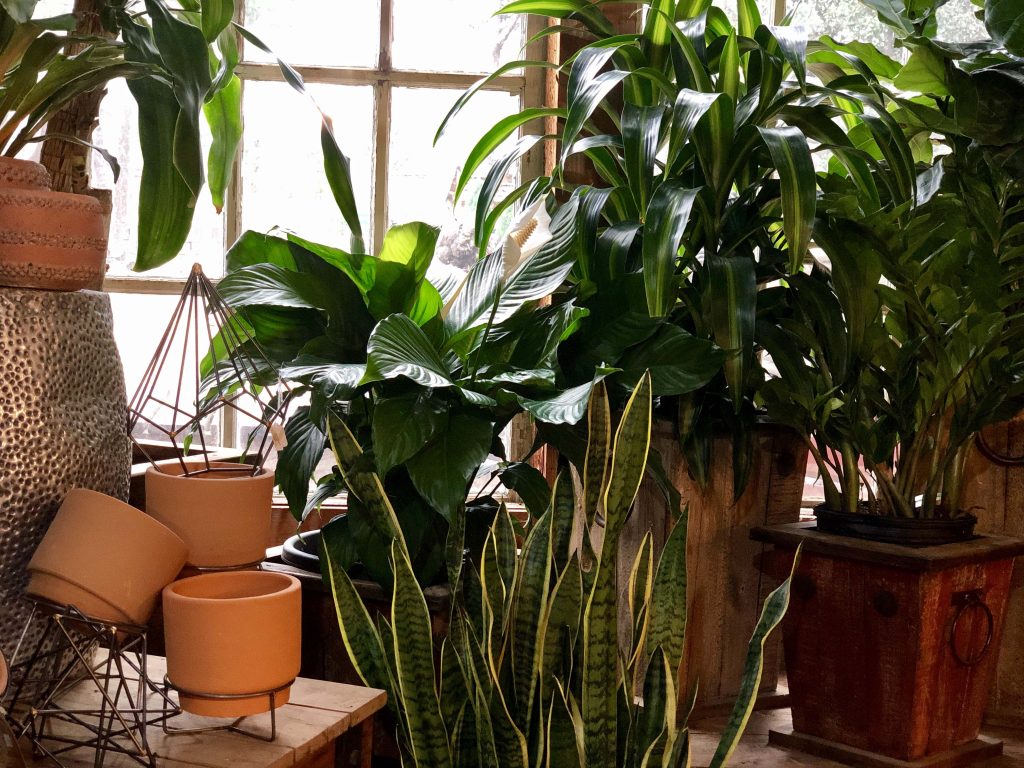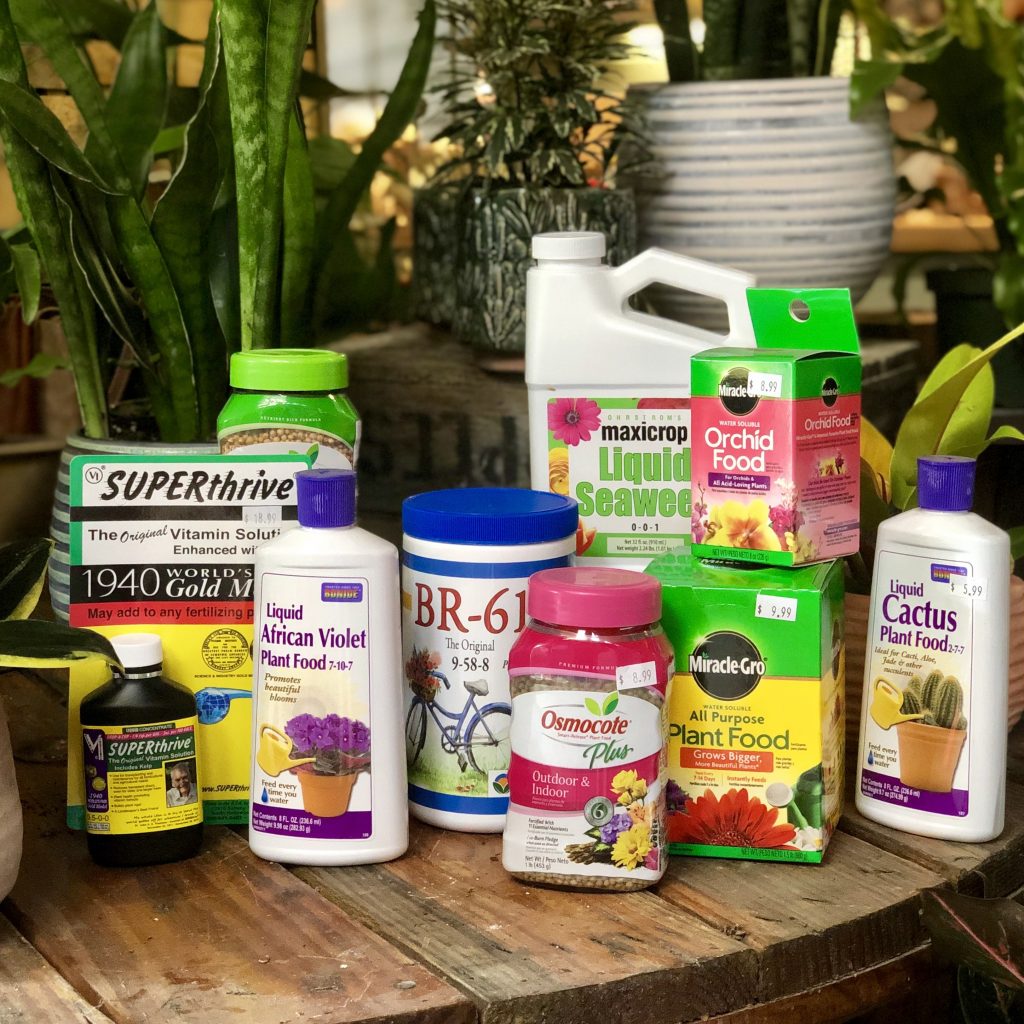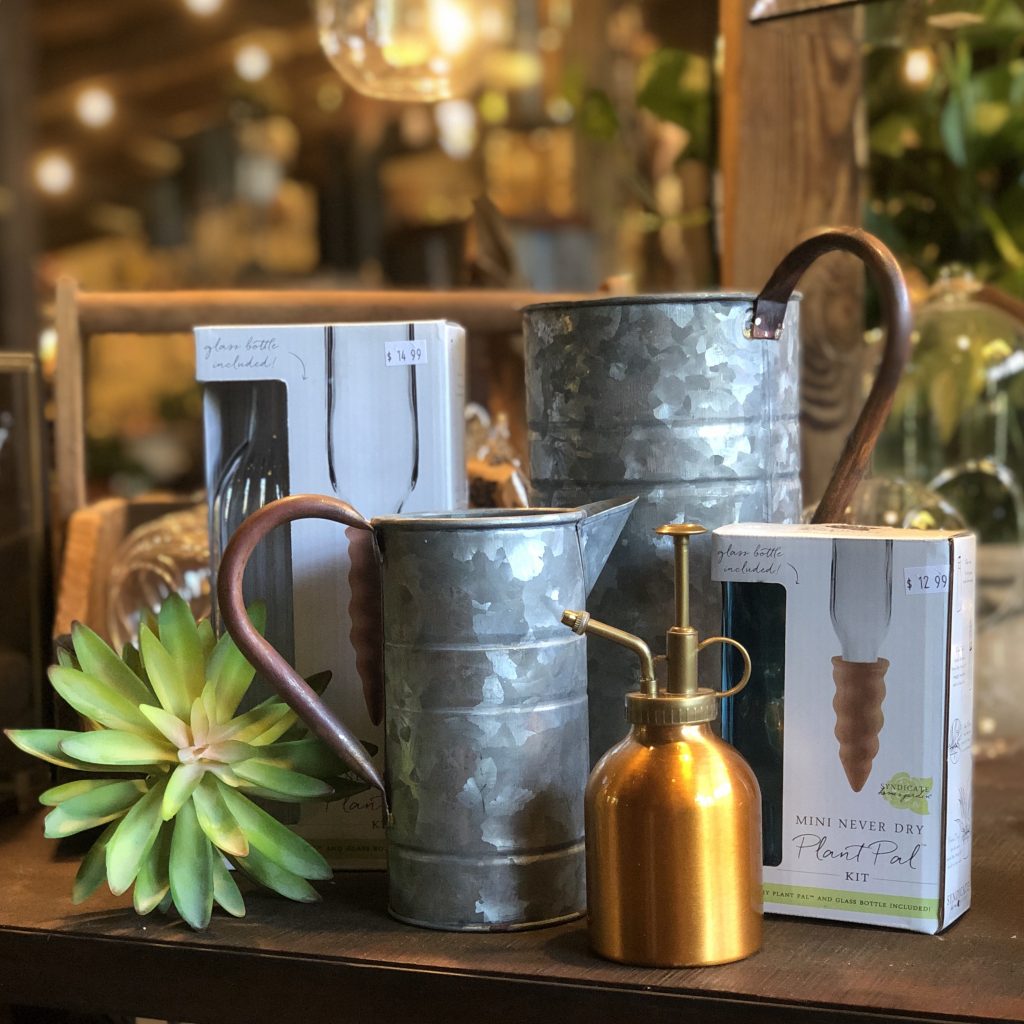How to Grow Happy Houseplants
Thumb through any magazine, Instagram feed or Pinterest page these days, and you will see a plethora of interesting houseplants gracing every style of decor you can imagine. We are huge fans of this growing trend; here are a few tips to keep in mind.
Choosing the right plant for you and your space:
Lighting is key for indoor plants, just like it is for outdoor landscape plants. There are three main categories of light; direct light, bright, indirect light, and low light. Choose the desired location for a new plant, then pick a plant that will work in that light or vice versa. Sometimes the two directions merge and the perfect plant can go exactly where you want it. Make your choices based on what the space’s light level is the majority of daylight hours, instead of a rare weekend day when the drapes are all open. Houseplant lighting, including plant suggestions for each category of light, is covered more thoroughly in our recent blog post here.
Tropical houseplants such as ferns, philodendrons, pothos, etc., require more frequent watering, while succulents need only occasional water. We talked to a person the other day who accidentally killed her succulent; she loved watering her plant and accidentally over-loved it to death. Given her love of watering, we sent her home with an air plant that she can mist often; a tropical would have worked as well. Those who prefer a lower level of care might be more successful with a succulent.
Giving the right plant the right care:
We are kind of obsessive about proper water because we see the results of both under and overwatering. In the example mentioned above, our friend said “I just don’t have a green thumb.” Yikes, that is one of the saddest, and more importantly untrue, things we hear. If you only pick up one tip from this article- this is it. YOU, yes you, have a green thumb. Learn, either through experience or education, and then apply that knowledge, and bingo, there is your green thumb!
And there are so many helpful tools out there; for example, our favorite one for houseplant success is a simple, inexpensive and effective product called the Moisture Meter. Just put the sensor into the soil and look at the reading to determine if it’s time to water… or if it’s time to wait. The package even comes with a chart indicating the moisture level many plants prefer.
Consider the drainage in your container, as in, does it have a drainage hole in the bottom or not? This impacts how the plant should be watered; if there isn’t a way for excess water to gather away from plant roots, add gravel to the bottom of the container and water less often, or plant in a separate container that can be removed for watering.
Don’t forget to feed your plants:
Don’t forget to fertilize your houseplants! There are many kinds of fertilizer out there; make sure you get one that is labeled for use on houseplants and use half the recommended rate especially in the winter and when plants are indoors. This is true for both water soluble (such as Miracle Gro) or time release (such as Osmocote) fertilizer. When plants are outside for the season, feed at the regular rate. A higher rate of fertilizer will cause a higher rate of growth; plan on bumping the plant up to a larger container (and possibly dividing, depending on variety) every 2 years or so. Gradually increase pot size, for example, for plants in 6” diameter containers, move to an 8” container. Orchids and African Violets benefit from using specialty fertilizers. Tropical ferns love an organic fertilizer like John’s Recipe.
For more houseplant fertilizing tips, visit this post.
The Nitty Gritty on watering:
Leach the soil once a month. This is the process of watering thoroughly, and letting excess water drain out. Watering is usually accomplished by giving the plant a smaller portion of water. This can cause salts to build up in the soil, especially when using full rates of fertilizer. Leaching both effectively rinses some of that salt out of the soil and introduces fresh air into the soil. Plant roots thrive on fresh oxygen. Water all the way around the plant; only watering one side of the soil mass could result in a decline of the roots on the continually dry side. Frequency and amount of water both matter; water an appropriate amount at the appropriate frequency.
For more watering tips, visit this post.
One other big tip- reach out to us. The Good Earth turns 45 this year and those years have given us experience and knowledge that we look forward to sharing with you!


